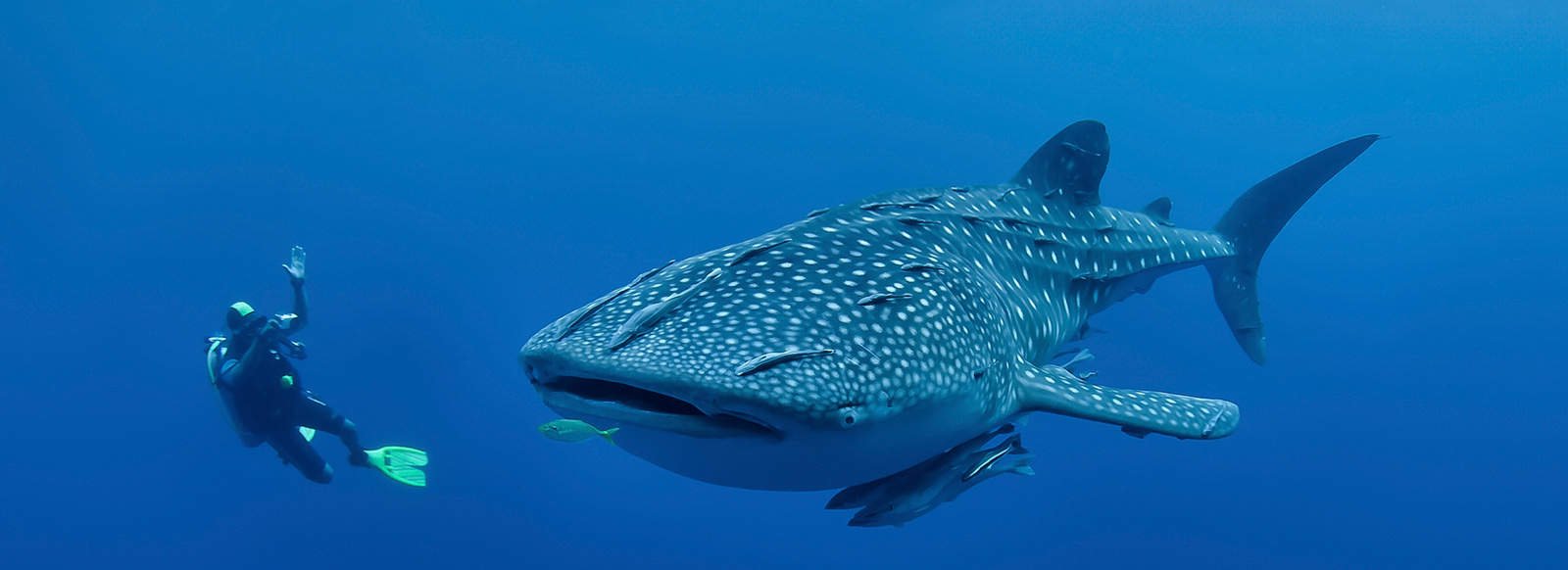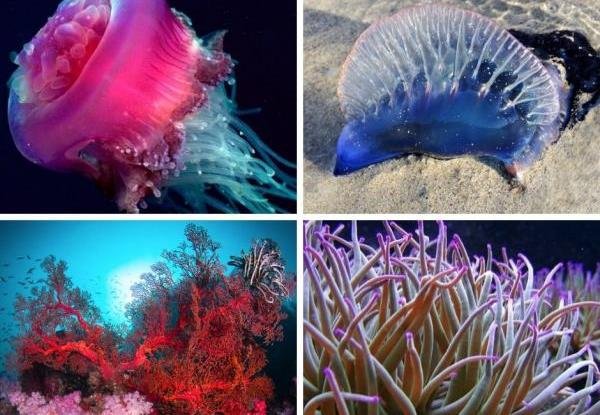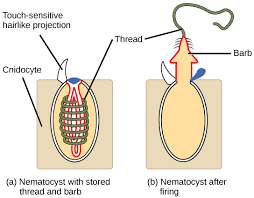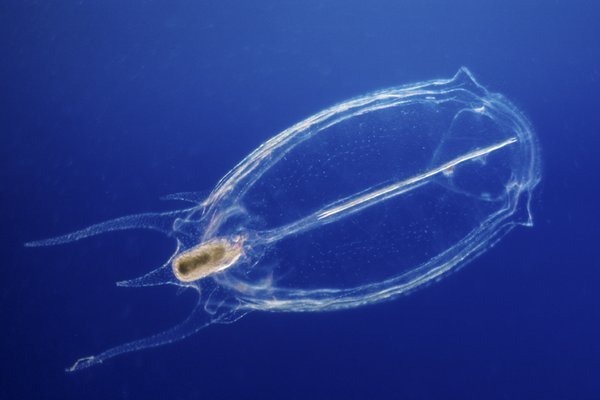
04 Dec JellyFish INFOS
Where, When? Which one, How,?… All JellyFish Infos you should know for your safety are here 😉 A meeting was recently held at the Ko Samui hyperbaric chamber on the subject of box jellyfish accident prevention. This meeting was aimed at the community of professional divers. I was there and I think it is important to share the main points discussed. In addition I will explain in details what is a jellyfish, which one is dangerous, when they will sting, how to protect yourself and how to react if someone get stung.
You should know that to date 12 accidents have occurred in the Gulf of Thailand. The first fatal accident was recorded in October 1999. The first important thing to remember is therefore that most of those affected survived.
JELLYFISH BIOLOGY:
Jellyfishes are part of the phyllum names CNIDARIA. Cnidaria is a phylum under kingdom Animalia containing over 11,000 species of aquatic animals found both in freshwater and marine environments, predominantly the latter..
Cnidarians are classified into five main groups:
1. Anthozoa (sea anemones, corals, sea pens);
2. swimming Scyphozoa (jellyfish);
3. Staurozoa (stalked jellyfish – The species of this order never enter the “polyp” phase and remain in the jellyfish state but attached to the substrate throughout their life.)
4. Cubozoa (box jellies); and
5. Hydrozoa (a diverse group that includes all the freshwater cnidarians as well as many marine forms, and has both sessile members, such as Hydra, and colonial swimmers, such as the Portuguese Man o’ War)
A nematocyst, elongated or spherical capsule is produced exclusively by members of the phylum Cnidaria (e.g., jellyfish, corals, sea anemones). Several such capsules occur on the body surface. Each is produced by a special cell called a cnidoblast and contains a coiled, hollow, usually barbed thread, which quickly turns outward (i.e., is everted) from the capsule upon proper stimulation. The purpose of the thread, which often contains poison, is to ward off enemies or to capture prey.
Which Cnidarians are dangerous?
All cnidarians have the potential to affect human physiology owing to the toxicity of their nematocysts. Most are not harmful to humans, but some can impart a painful sting—such as Physalia, the Portuguese man-of-war, and sea anemones of the genus Actinodendron. These, and even normally innocuous species, can be deadly in a massive dose or to a sensitive person, but the only cnidarians commonly fatal to humans are the cubomedusae, or box jellyfish. Anaphylaxis (hypersensitivity due to prior exposure and subsequent sensitization) was discovered with experiments on Physalia toxin. Extracts of many cnidarians, mostly anthozoans, have heart-stimulant, antitumour, and anti-inflammatory properties.
Which cubozoa are dangerous?
The class Cubozoa contains two orders, Carybdeida and Chirodropida. Together, both orders comprise about 20 described species. Although some reach a diameter of 25 cm (10 inches), most range between 2 to 4 cm (1 to 2 inches). The jelly is rather spherical but squared off along the edges, giving rise to the common name of box jellies. The genera Chironex and Chiropsalmus, commonly called sea wasps, occur widely from Queensland northward to about Malaya. These forms have remarkably sophisticated 24 eyes (Their eyes are located on each of the four sides of their bell in clusters), and they are dangerously venomous; a moderate sting can cause death within a few minutes, especially if you are a child and if the tentacules could touch a large area of your skin. In all the box jellies so far studied, the polyp stage produces but a single medusa. Through the process of budding, polyps emerge from a medusa or from another polyp. Essentially, a single planula larva may produce numerous, genetically identical medusae.
They possess a nerve ring around the base of the umbrella that coordinates their pulsing movements; so they can control where they want to go.
IRUKANDJI (CARUKIA BARNESI)
The Irukandji jellyfish can be found off the coasts of Australia, and it is considered one of the deadliest creatures on the entire continent. These jellyfish are extremely venomous, much more than the chironex, specialists said. , and most often inhabit the northern waters of Australia.
This one does not leave marks on the body so its even difficult to diagnose what actually happened.
Carukia barnesi (the Irukandji) is a small jellyfish (~2cm diameter bell) responsible for an unusual and dramatic syndrome observed following stings in northern Australia, especially north Queensland. Unlike Chironex fleckeri, Irukandji are found mostly in the deeper waters of the reef, although they may be swept inshore by prevailing currents. Divers and snorkellers are particularly at risk.
CHIRONEX FLECKERI (box jellyfish)
Chironex fleckeri Is one of the most dangerous jellyfish, and indeed one of the most dangerous venomous creatures in the world, but far after the Irukandji,. It is a large jellyfish, weighing up to 6 kg and measuring about 20-30 cm across the bell. The tentacles may stretch up to 2 to 3 m. It is transparent in the water, and therefore difficult to see (but at night we can see them very well with torches).
Chironex Fleckeri has 4 bundles of tentacles, which may number up to 60 in total (15 tentacules max per corner). Each tentacle has about 5000 cnidocytes containing nematocysts or stinging cells which discharge venom through the skin on contact. Contact with a large amount of tentacular material over a wide surface area can result in massive envenomation.
He named it Chironex fleckeri, the name being derived from the centaur Chiron in Greek mythology, the Latin nex meaning “murder”, and “fleckeri” in honour of its discoverer.
The venom from the Chironex fleckeri is powerful enough to degrade cell walls, causing them to leak potassium, a condition called hyperkalemia.
Hyperkalemia is an assault on the cardiovascular system and often results in a collapse, and then death, all within a 5 minute time period if the area reached is too big and especially if you are a kid.
In Australia, Chironex fleckeri has caused at least 64 deaths since the first report in 1883, but even in this species most encounters appear to only result in mild envenoming. Most recent deaths in Australia have been in children, which is linked to their smaller body mass.
In Thailand, there have been 15 serious cases recorded between 1997 and 2015 (the majority attributed to (Chironex fleckeri), though many cases of smaller sting incidents have gone unreported (officially).
CHIROPSALMUS QUADRIGATUS (four-handed box jellyfish)
Chiropsalmus quadrigatus is similar to but smaller than the box jellyfish Chironex fleckeri. The bell measures up to 7cm, and the number of tentacles on each of the pedalia (fleshy arms) seldom exceeds nine. The tentacles are shorter and finer than those of C. fleckeri. Stinging results in severe pain and shock, but the illness is less severe than that of the box jellyfish. Residual scarring is usually minimal. No deaths from the sting of this genus have been reported in Australia, although there have been reported deaths in the Philippines
How does a jellyfish recognize danger and defend itself?
The jellyfish “recognizes” if the touch is another tentacle, prey or an enemy like humans. Human skin releases a substance to which cnidoblast receptors react. This information is transmitted to the cnidarian capsule by messenger substances.
In a fraction of a second, the enormous pressure of 150 to 200 atmospheres is created – 200 times the air pressure of a car tire. The micro-projectile coiled in the nettle capsule is fired at a speed 40,000 times greater than the acceleration of gravity. This “Medusa kiss” is one of the fastest movements ever observed in nature. Like a high-speed bullet, the harpoon penetrates the stratum corneum, the tough stratum corneum of the skin, and the poison of the jellyfish enters the blood.
When, where and why jellyfish are seen around Koh Phangan?
The box jellyfish actively hunts its prey (zooplankton and small fish), rather than drifting as do true jellyfish. It is capable of achieving speeds of up to 4 knots (1.8 m/s).. By night, They come back more at the surface to hunt the zooplancton which is attracted by more light at the surface by night. Actually, the jellyfish itself is looking for the light, because its where is the food. She actually got 4 of its eyes always pointing towards the sky. (see source: national geographic)
Researchers found as well that the creatures swim toward shore on the nights in the lunar cycle when there’s an especially long period between twilight and moonrise – and that they do so in order to spawn. The box jellyfish reliably appear near shore eight to 10 days after the full moon.
Thats why we can see them more by night very close from the surface and close from the shore, especially in quiet areas such as bays, in warm tropical seawater.
After local rain and in calm seas, you can spot them more,: near river and creek outlets. They are looking for fresh water to spawn.
More box jellyfish appear during Thailand’s wet monsoon season, owing to the increased activity of the ocean and the changing winds that bring these jellyfish closer to the shoreline, where swimmers are more likely to be.
This season on koh phangan and koh samui runs from May/June through October, with the most rain in November and beginning December.
If we look at the 15 officially documented and analysed cases since 1997: The highest incidence by month was August (33.3 %) – proportionnaly august is the month with more tourists- September and October (20%), and July (13.3 %). Eight cases occurred on Samui (53.3 %), 6 cases on Koh Phangan island (40%), and one case on a boat.
Statistics referenced from study by Lakkana Thaikruea and Potjaman Siriariyaporn.
On which beaches accidents happened in thailand? (source: thailandlife)
East Haadrin beach of Koh Phangan (27.3 %), 1 case in Bottle beach (Phangan), Chawang beach of Koh Samui (27.3 %), and Bo Phut of Koh Samui (18.2 %). Two cases occurred on Lamai beach of Koh Samui, and Khuat beach of Koh Phangan.
Incidents have also been reported along the west Strait of Malacca; most notably Krabi, Phuket, Ko Lanta, and Koh Phi Phi,
Thailand’s Andaman Coast, which sees much deeper water, is considered to be the safer in terms of jellyfish activity. However, both Hua Hin and Cha-am do suffer serious jellyfish influx during the wet season.
Precautions that should be taken: How to protect yourself from contact with box jellyfish?
=> Avoid swimming in areas where Box jellyfish are found during the jellyfish season (variable, but its more during the raining season) and heed warning signs on beaches. N.B. avoid swimming alone or at remote beaches. Avoid night swim with no protection.
=> Wear specially designed “stinger suits” while in known Box jellyfish waters. Long clothes will protect you effectively. Incidentally, they will also protect you from sunburn and now there are very aesthetic bathing clothes. In our dive school we have long suits, gloves, booties and hoods to protect us and our customers. We even have the specifics stingersuits against jellyfish. But any lycra or néoprène will work.. Indeed in the diving community, many of us wear only long clothing, even including hoods, gloves and boots, in all seasons. This is my case and it’s 100% safe in addition to being comfortable.
The stinger suits, dive suits, dive skins, wetsuits are all effective and cover arms and legs to the wrists and ankles. It is definitely worth considering suits for children in particular as they are more vulnerable in terms of being able to sport the danger and withstand the sting.
=> Swim at beaches patrolled by life savers, preferably equipped with vinegar, antivenom and basic resuscitation facilities
=> Exercise caution on entering the water (do not dive or run into the water)
=> Strictly supervise children, who are more prone to stings, and whose lower body weight may render them more susceptible to the effects of the venom
=> Swim at beaches that have been netted to exclude box jellyfish ( ex: Haadrin beach in koh phangan).
(N.B. this will not prevent Irukandji stings, as these animals are much smaller than box jellyfish, and can fit through the gaps in the mesh of jellyfish nets)
Jellyfish don’t recognize humans in wetsuits as a danger
The jellyfish does not recognize the surface of the stinger suit as prey, enemy or human skin, so the reaction described above does not even occur. Overall protection against burns and injuries caused by jellyfish poison is therefore guaranteed.
Extensive testing by marine biologists has proven the functionality of the jellyfish protective suits and provides swimmers with a high level of protection against dangerous jellyfish in the water.
Stingersuit is made from a blend of special high-tech materials that provide durability, flexibility and a breathable structure that feels like a second skin.
How to react if you witness an accident?
The affected person will feel excruciating pain and will likely scream in pain. Immediately call the emergency services. It’s the first thing to do. The number is 1669. Tell them exactly where you are and that it’s probably a box jellyfish accident.
Do not enter the water unless you are properly protected. If you are stung yourself you won’t be able to help anymore.
Be aware that touching the injured areas will activate the venom. So don’t try to remove the filaments and you have to try to convince the injured person not to touch anything and get out of the water on their own. Easier said than done, I know.
1. Deactivate the venom by applying generous amounts of vinegar to the injured parts. You need to apply at least one liter for it to work but five liters is not too much. The more you can put in, the better for at least 30 to 60 SECONDES.
=> Do not urinate on the wound (useless + risk of infection); Do not scratch the wound (it will get worse); Do not put alcohol on the wound; Do not rinse with fresh water so as not to burst the blisters.
2. Cover the wound with sand WITHOUT RUBBING and then start removing the tentacles.
3. For this you can use for example a loyalty card (ideally it would be a razor). Don’t try to do this with your bare hands, use a tool.
4. Once tentacules are gone, apply again some vinegar.
5. To manage pain, soak in hot, but not scalding water. for at least 45 minutes. Hot (45C or 105F) water – a hot shower will also work to preserve the greatest amount of red blood cells.
6. Finally disinfect and Take a painkiller, such as paracetamol, in case of pain.
7. To relieve the sting you can apply the same treatment as for a burn, Biafine.
=> TIP: Jellyfish or mosquito bites, baking soda helps relieve the affected area. To do this, apply a mixture of 3 parts sodium bicarbonate and 1 part water to the bite.
How to react if the person loses consciousness?
The venom is so potent that it can lead to cardiac arrest. If the person passes out check to see if they are breathing, if not but you have first aid training start CPR. Even if your training dates back a long time, try anyway, do not hold back your actions. A person in cardiac arrest is technically dead, you cannot make the situation worse, but you can give them a chance while waiting for help to arrive.
In summary: wear long clothes and for all those who have boats, embark large quantities of vinegar. And above all, don’t forget the emergency number: 1669.
Be careful friends!
Additional info: This jelly creature that you can see around as well is not a jellyfish:
SALPS
Despite looking rather like a jellyfish, salps are a member of the Tunicata, a group of animals also known as sea squirts. They are taxonomically closer to humans than jellyfish.
Salps are classified in the Phylum chordata; they are related to all the animals with backbones. Larval salps have a notochord running down their back, a tough, flexible rod which protects the central nerve cord and provides and attachment point for muscles. Adults lose their notochord as they grow, but it is one of the ways we can tell that sea squirts are the closest living relatives of the vertebrates.
















Sorry, the comment form is closed at this time.